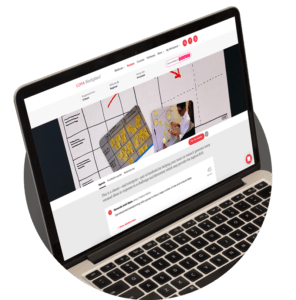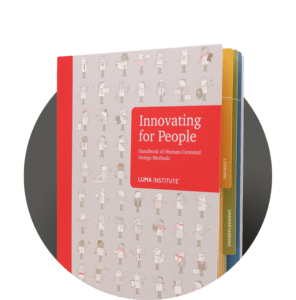Method overview
For an air traffic controller, bright spots on a radar screen often indicate the need for decisive action. It is the controller’s job to closely monitor everything within his scope to ensure successful outcomes. Using a radar diagram as a method for discovery in design can work in much the same way. This method provides a template where people can organize items within a given scope based on how important or relevant they consider them to be. So, whether you are dealing with concrete items or abstract concepts, the diagram is a useful way for people to assign rank.
Reading the diagram is straightforward: the things people assign to the center circle (which is deliberately small) are most significant, while those in successive circles are less so, and those outside the diagram are not even blips on their radar. The format forces participants to express clear distinctions between what is primary, what is secondary, and what is tertiary.
The benefits of this method
- Reveals what people are thinking.
- Shows how people prioritize.
- Challenges your preconceptions.
- Yields documents that inform ensuing work.

Quick guide
- Identify a topic for consideration.
- Make a large poster that looks like a radar screen.
- Include 3 concentric circles and 4-6 segments.
- Label the circles: Primary, Secondary, Tertiary.
- Label the segments as subcategories of the topic.
- Invite a group of stakeholders to be participants.
- Give each person a poster, a pen, and sticky notes.
- Instruct them to plot their personal considerations.
- Ask the participants to describe their rankings.
Helpful hints
- Limit the time for plotting items to 15 minutes.
- Allow participants to write in some segment labels.
- Listen closely when people describe what they did.
Combining LUMA methods into design recipes
The methods in the LUMA System are great on their own, but they are really powerful when combined into design recipes. Just like when you combine ingredients to make a tasty meal, you can also combine design methods to address challenges such as improving workplace culture or uncovering customer insights.
An example of a recipe from LUMA Workplace®:


Want to learn more about LUMA methods?


